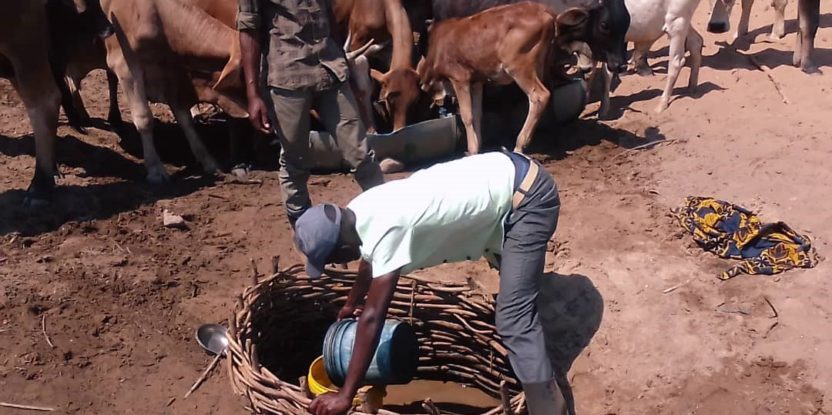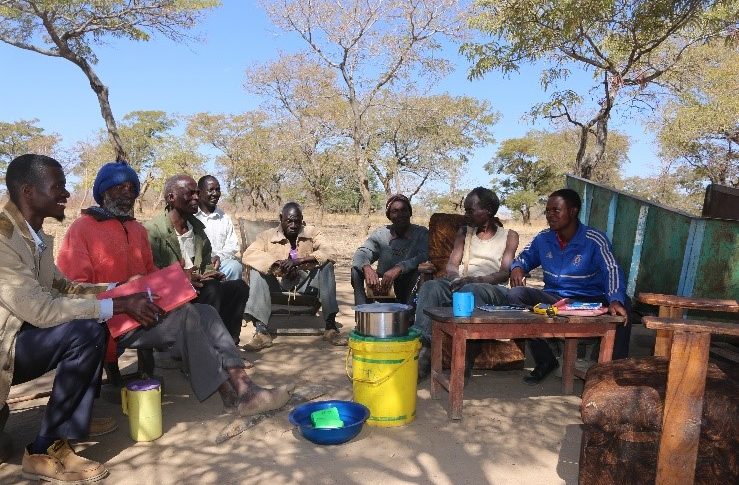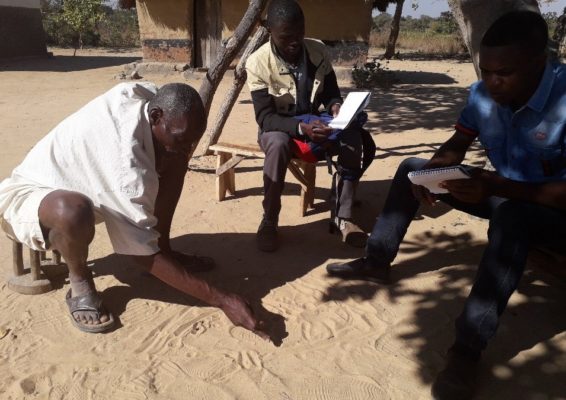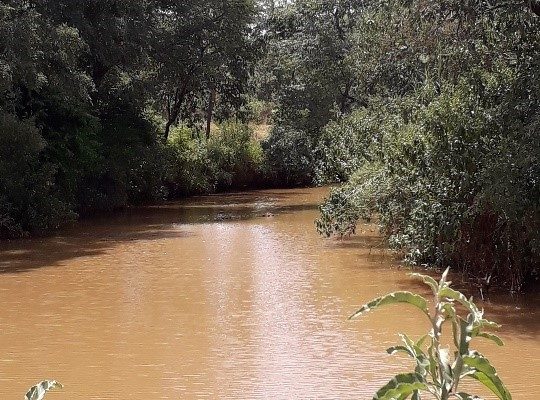With our field work stalled by social unrest in Zambia and then the global COVID-19 pandemic, we decided to seize this opportunity to reflect on what we have accomplished in two years of work in Zambia’s Kalomo district with the initiative Collaborating to Operationalise Landscape Approaches for Nature, Development and Sustainability (COLANDS).
Before the project’s first full Kalomo District Council meeting in October 2018, rumors were flying about what the project might involve. We heard, for example, the incorrect rumor that COLANDS involved tree-planting, triggering speculation about finding land for this purpose.
Matters became clearer in the following months amid our preliminary study missions at chiefdom and district levels with development policy interventions and resource management scenarios. At the same time, the Zambia office of the Center for International Forestry Research (CIFOR) – host of COLANDS – introduced the research project to leaders and authorities at the provincial, district and chiefdom level.
Clarity improved further in 2019 with multiple stakeholder engagement activities covering both biophysical and social themes. A reconnaissance survey in February 2019 revealed the general land degradation associated with both legal and illegal human settlement on state lands — protected forest reserves — and iconic customary sites, including sacred groves, (Malende in the Tonga language) some of which are national heritage sites, such as Maanzi Abila or Bbilili Hot Springs.
Significant threats include charcoal production activities, drought, reduced water flow and loss of surface water bodies, “extensification” of agricultural cropping and livestock production practices (overstocking or shrinkage of grazing land), and riverbank cultivation resulting in sedimentation of waters, such as rivers and streams.
A formal inception workshop in Choma and project launch in Kalomo in March 2019 confirmed existing knowledge and revealed more characteristics of the district landscape. Workshop participants identified the following threats to the effective use of landscape approaches: failed conflict resolution processes concerning development and conservation as well as access to resources; limited coordination and acceptance among stakeholders; inconclusive dialogue; sectoral management of natural resources leading to fragmentation of resources and land.
We wondered if we would achieve better landscape governance by first addressing the necessary conditions for successful landscape management.
Such conditions, identified through stakeholder engagement, inception and village headmen workshops, included:
- active community involvement
- collaboration and integration
- conducive policy environment
- critique and recognition of traditional leadership involvement (as a traditional trait)
- open (inclusive) dialogue
- supportive structures and appropriate attitudes
- transformative mutual learning
- valuing human diversity.
We continued to explain the COLANDS project intentions through several technical working group meetings and generative scoping missions; ecological surveys of rain-making shrine sites; and traditional leaders’ workshops and meetings in 2019. These strategic activities, involving primary and secondary stakeholders, further revealed the multifunctional nature of Kalomo’s landscapes.
Important local themes emerged associated with biodiversity and diverse land uses that drew on the history, skills and knowledge applied by local people to manage the landscape. We learned more about the principal landscape types and functions, changes in the landscape, and organizational structures.
Themes emerged: the role of family and households, issues of power and space or territory, control of access to resources, claims and counter-claims over resources, conflict resolution mechanisms, networks, and the community vision for the landscape. We re-confirmed the importance of centrality of these issues in February 2020 during a two-day Theories of Change (TOC) workshop in Choma.
What happened after the COVID-19 outbreak?
Unfortunately, soon after that workshop, life in Kalomo and indeed, around the world, became badly disrupted by the global COVID-19 pandemic. Even before the pandemic, criminal use of toxic gas on citizens began in Zambia, leading to major social unrest and insecurity. This has disrupted field activities, and the rapid biodiversity assessment work that should have followed the TOC workshop has been stalled.
We have been navigating the situation, gathering data on the Kalomo Hills Local Forest Reserve No. P.13 through contacts, including some COLANDS Technical Working Group members. Otherwise, most work is at our desks: planning, mobilizing activities from a distance and writing about our early findings. But we cannot observe these complex landscapes as they are, in real time.
In reviewing our work to this point, we have concluded: there has been ubiquitous loss of quality in landscape resources, especially the biophysical resources, driven by poor management and in part, a lack of options.
Trees, soil fertility and wildlife have been lost. Power is skewed in chiefdoms or villages and leadership qualities among village leaders are not equal. Some villages are more wooded or less degraded than others, which could be attributable to the varying abilities of leaders in managing village landscapes and access to resources.
We have also seen how local community members that wish to contest access to resources and boundaries in their chiefdoms or villages are rendered powerless in the face of chiefdom or village leaders and government.
Cultural shrinkage or change in the landscape appears to hinge on the capacity to enforce customary rules and uphold traditional values. Traditional and Christian belief systems are also at loggerheads in some instances — for example, regarding shrines or Malende institutions.
Generational gaps between the old and the young people within villages mean a waning of customary norms in some cases.
Despite the quarantine constraints, some stakeholders are proposing activities through requests for assistance. For example, Headmen for Siabalumbi village in the Sipatunyana chiefdom want support to establish a village avocado plantation.
Headman Habulile and his people in Chikanta chiefdom want physical fences rather than social “fencing” for their sacred groves or Malende site.
Chiefs have asked for CIFOR’s help in persuading the Kalomo district administration and council that create a boundary between state lands. For example, the Kalomo Hills Local Forest Reserve – and their customary lands represents a step forward in addressing conflicts around the reserve.
Other requests include capacity-building support for monitoring community activities or projects and populations (number, migration).
Based on our reflections, we have two recommendations for strategic actions:
- A platform for head persons across chiefdoms to encourage communication with villagers and other leaders. This could be instrumental in promoting landscape governance.
- More historical policy analysis of past, relevant forestry, land and agriculture policy interventions with associated governance platforms. Soil conservation and fertility enhancement, land management and conservation farming, improved farmer schemes, community-based natural resource management and sustainable agriculture programs are examples. These have used governance platforms in the form of boards (e.g. national marketing boards) or project management units.
We have seen progress from engaging primary and secondary stakeholders, despite the current setbacks. It may be premature, but we think something is emerging, and there are salient, and sale-able lessons to expect from the COLANDS.
It only requires, as a minimum, sustaining the extant relations and networks that have been developed.
COLANDS is part of the International Climate Initiative (IKI) and is funded by the German Federal Ministry for the Environment, Nature Conservation and Nuclear Safety (BMU). Ph.D. research is hosted at the Faculty of Forestry of the University of British Columbia and the Institute for Social Science Research (AISSR) of the University of Amsterdam.
We want you to share Forests News content, which is licensed under Creative Commons Attribution-NonCommercial-ShareAlike 4.0 International (CC BY-NC-SA 4.0). This means you are free to redistribute our material for non-commercial purposes. All we ask is that you give Forests News appropriate credit and link to the original Forests News content, indicate if changes were made, and distribute your contributions under the same Creative Commons license. You must notify Forests News if you repost, reprint or reuse our materials by contacting forestsnews@cifor-icraf.org.



